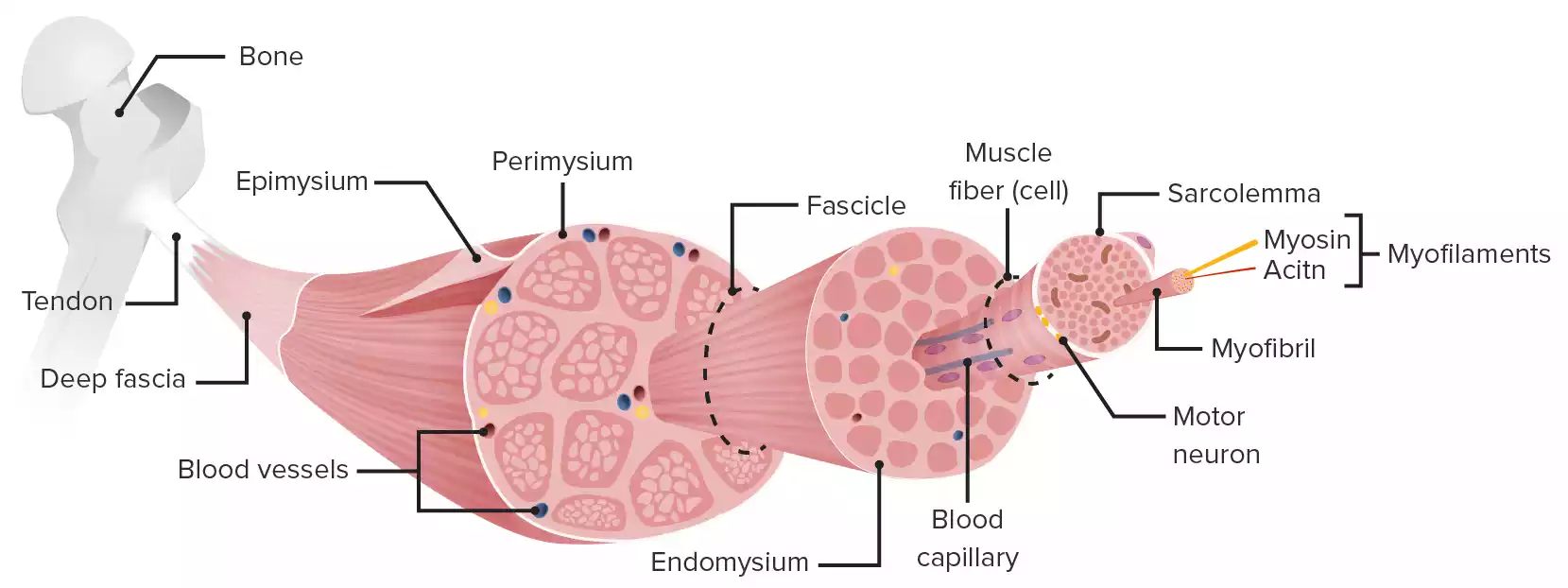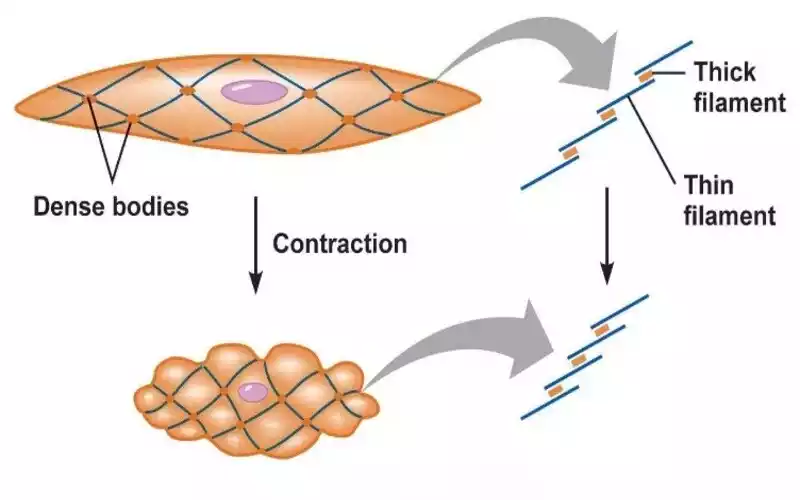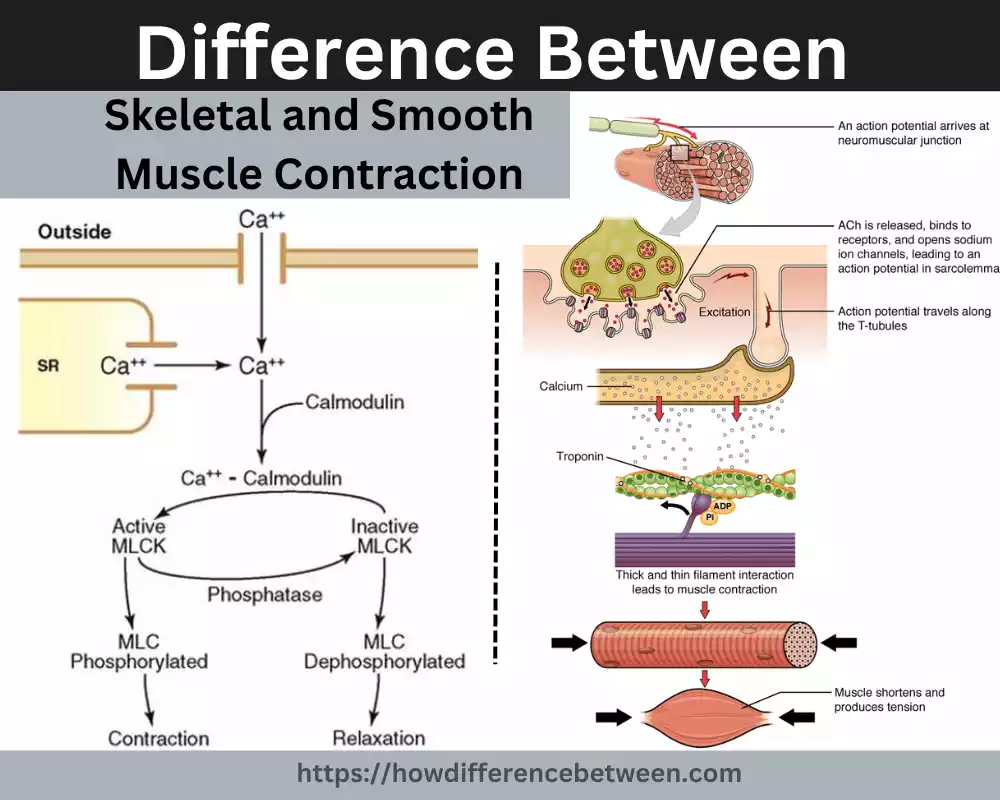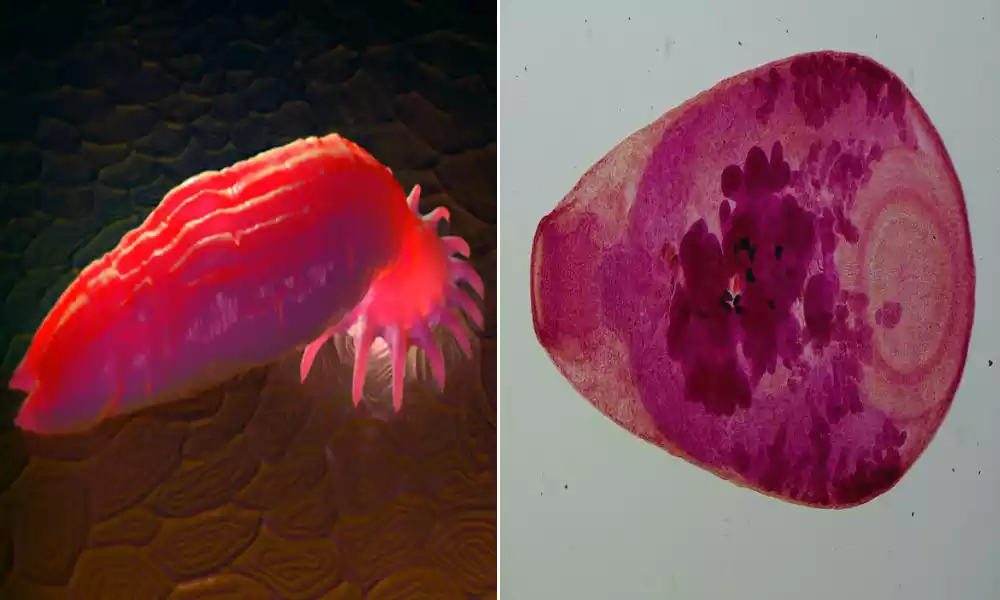Definition of Skeletal and Smooth Muscle Contraction
Skeletal Muscle Contraction: This process refers to when the muscles attached to bones generate force and shorten in length under conscious control – such as during walking, running, or lifting objects.
Smooth Muscle Contraction:
Smooth muscle contraction refers to the contraction of smooth muscles found within organ walls and blood vessels, which cannot be under voluntary control like their counterpart skeletal muscles can. Smooth muscles play an essential part in involuntary movements such as digestion, blood flow regulation, respiratory movement regulation, etc.
At its core, both types of muscle contraction involve proteins known as actin and myosin which combine forces between their respective proteins to cause the muscle fibers to contract and make forceful contractions possible. Yet there are significant distinctions in their control, regulation, structure, and function; understanding these variations is vital in understanding musculoskeletal systems as a whole and physiological system in general.
Importance of understanding the differences
Understanding the differences between skeletal and smooth muscle contraction is of great significance, for various reasons:
- Clinical Applications: Understanding these differences aids physicians in diagnosing and treating various medical conditions, for instance understanding how smooth muscle contraction differs from skeletal muscle contraction enables healthcare practitioners to identify and address disorders like digestive motility disorders, cardiovascular conditions, or urinary tract problems more accurately.
- Research and Drug Development: Understanding the unique mechanisms governing skeletal and smooth muscle contraction is integral to creating tailored therapies and drugs. Researchers can study specific proteins, signaling pathways and regulatory mechanisms involved with each muscle type; eventually leading to advancements in pharmaceutical interventions.
- Exercise Physiology: Differencing between skeletal and smooth muscle contraction can give athletes, coaches, and exercise professionals insight into exercise performance, adaptations to training adaptations, injury prevention strategies and injury rehabilitation plans. Training programs should reflect specific characteristics of voluntary muscle movements to optimize results and avoid injuries.
- Biomechanics and Prosthetics: Understanding how each muscle type contracts can lead to more effective designs that mirror natural movement patterns and result in prosthetic devices with improved force generation, speed, and control capabilities. This could make prostheses and artificial limbs more lifelike and reliable.
- Motor Control and Rehabilitation: Understanding the distinct control mechanisms affecting skeletal and smooth muscle contraction is integral for studying motor control, neurorehabilitation and the creation of assistive technology to assist those living with movement disorders or disabilities.
- Comparative Anatomy and Evolution: Investigating differences in muscle contraction between species can provide invaluable insights into evolution and adaptations within muscle systems, helping researchers better comprehend how muscle types have come to fulfill specific functions within specific organisms. Comparative anatomy helps researchers gain this perspective.
As discussed previously, comprehending the differences between skeletal and smooth muscle contraction can unlock breakthroughs in medicine, drug development, exercise physiology, biomechanics, rehabilitation and evolutionary biology. Such knowledge helps us diagnose and treat medical conditions more efficiently as well as develop targeted therapies, optimize exercise programs and design prosthetic devices as well as deepening our understanding of nature and natural world processes.
Skeletal Muscle Contraction
Skeletal muscle contraction is a complex process which takes place when striated skeletal muscles produce force to undergo shortening or contracting motions, attached to bones by tendons, which generate force to facilitate voluntary movements such as walking, running and lifting objects.

Skeletal muscles can be contracted under conscious control by initiating and regulating signals sent from the central nervous system, including stimulating actin and myosin proteins that form muscle fibers to interact. This interaction occurs within structural units known as sarcomeres in order to create muscle contraction.
As soon as a nerve impulse from motor neurons reaches the neuromuscular junction, an amino acid known as acetylcholine is released by it binding with receptors on muscle fibers to initiate contraction process and lead to sliding filament theory of muscle contraction.
According to the sliding filament theory, myosin heads attached to thick filaments attach themselves to actin filaments and pull them towards the center of a sarcomere, shortening it and using up energy supplied in form of Adenosine Triphosphate (ATP). When this energy source depletes due to hydrolysis by enzymes within cells, myosin heads detach from actin, reset and rejoin to continue the contraction cycle.
Calcium ions also play a significant role in skeletal muscle contraction regulation. When stimulated, calcium ions are released from within each fiber’s sarcoplasmic reticulum and bind with troponin protein molecules which then undergo conformational change that allows myosin heads to link with actin filaments for contraction initiation.
Skeletal muscle contraction varies both in speed and force depending on various factors like number of recruited fibers, frequency of nerve impulses and length-tension relationship of muscle fibers recruited; training and exercise can lead to adaptations that strengthen and extend endurance for improved performance in these muscle.
Skeletal muscle contraction is a finely coordinated process involving actin and myosin filaments interacting through nervous system input and calcium ions; its understanding is crucial in fields like physiology, sports science, rehabilitation medicine and medicine.
Smooth Muscle Contraction
Smooth muscle contraction refers to the process by which non-striated, smooth muscles generate force and contract without conscious control, such as in the walls of internal organs or blood vessels, unlike with skeletal muscles which require conscious awareness for control over contraction and movement of organs such as digestion or respiratory movements. Smooth muscles play an integral part of daily living as organ walls contain these non-striated fibers lining organs like digestive, circulatory system regulation or respiratory movement functions that rely on smooth muscle contraction for function and regulation.

Smooth muscle cells differ significantly from their counterparts found in skeletal muscles in terms of their structure, appearance, and actin/myosin filament organization; smooth muscles typically feature spindle-shaped cells without visible striated lines like their counterparts do; these filaments do not form organized sarcomeres as seen with skeletal muscles.
Smooth muscle contraction is controlled primarily by the autonomic nervous system. Nerve impulses from autonomic nerves release neurotransmitters that bind with receptors on smooth muscle cells and trigger contraction via cascading events; depending on which receptor type and organ are being targeted by this activity. Neurotransmitters either stimulate or inhibit muscle contraction depending on which receptor type and organ is affected by them.
Smooth muscle contraction relies upon activating myosin light chain kinase (MLCK). MLCK works by phosphorylating myosin heads to enable them to attach themselves to actin filaments and cause contraction of smooth muscles. Calcium ions and the protein calmodulin play an integral part in activating this pathway and leading to smooth muscle contraction.
Smooth muscle contraction differs significantly from its counterpart skeletal muscles in that its contraction occurs more slowly and steadily, providing essential benefits in areas like organ tone regulation and blood pressure regulation.
Smooth muscle contraction occurs unknowingly to individuals; its causes include hormonal influences, local chemical signals and organ distension or stretch/distension.
Understanding the distinctions between skeletal and smooth muscle contraction are vitally important for medical practitioners, physiologists and researchers. Doing so allows them to accurately diagnose and treat conditions caused by smooth muscle dysfunction as well as develop targeted therapies and comprehending physiological mechanisms governing organ functioning and regulation.
Differences Between Skeletal and Smooth Muscle Contraction
There are various key distinctions between skeletal and smooth muscle contraction:
Control and Regulation:
- Skeletal Muscle Contraction: Voluntary Controlled Skeletal muscle contraction can be initiated and managed consciously via voluntary action by initiating central nervous system signals such as motor neurons from either brain or spinal cord areas supplying innervated skeletal muscle fibers for precise movement control.
- Smooth Muscle Contraction: Smooth muscle contraction is involuntary and controlled by the autonomic nervous system, without conscious conscious input or any need for conscious effort on our part to control it. Hormones, local chemical signals, and stretch receptors all play an influential role. Our speed and force of contraction is determined by these external stimuli such as hormones or chemical signals from other regions within our bodies influencing it in real time.
Speed and Force of Contraction:
- Skeletal Muscle Contraction: Skeletal muscles have the capability to rapidly and forcefully contract, making them suitable for fast yet powerful movements like jumping or lifting heavy objects.
- Smooth Muscle Contraction: Smooth muscles contract slowly and exhibit sustained contractions for purposes like organ tone maintenance, digestive peristalsis and controlling blood flow regulation. They play an integral part in keeping organs intact as well as providing peristalsis support in digestive systems and controlling blood flow regulation.
Tennent Structure and Organization:
- Skeletal Muscle Contraction: Smooth Muscle Contractions have two components; smooth muscle contraction itself as a force source (peristalsis in digestion systems) as well as structuring organization within cells within organs themselves (structure).
- Skeletal Muscle Contraction: Skeletal muscles have an almost striated appearance due to a highly organized arrangement of actin and myosin filaments in repeating units along muscle fibers that create efficient force generation. These repeating units, called sarcomeres, allow efficient force creation.
Energy Requirements:
- Smooth Muscle Contraction: Smooth muscle contraction differs significantly from that of other muscle types in that there are no sarcomeres present, instead the actin and myosin filaments tend to be spread more randomly throughout smooth muscle cells and connected by dense bodies.
Energy Requirements for Skeletal Muscle Contraction: Attracting rapid and forceful contractions requires high amounts of ATP; its breakdown provides energy for crossbridge cycling and muscle contraction. - Smooth Muscle Contraction: Smooth muscle contraction requires lower amounts of ATP than its skeletal counterpart, as sustained contractions don’t necessitate as much energy expenditure.
These differences in control, speed, force, structure and energy requirements help define the distinct functions and characteristics of both skeletal and smooth muscle contraction. Recognizing them is of crucial importance in fields like physiology, medicine and biomechanics – as understanding them allows targeted interventions, accurate diagnoses and an enhanced knowledge of muscle function complexities.
Ending
Understanding the differences between skeletal and smooth muscle contraction is vital in various fields of study and application. Skeletal muscle contraction requires conscious control for precise voluntary movements with rapid, forceful contractions whereas smooth muscle contraction occurs unknowingly within internal organs, blood vessels and other structures with slower, sustained contractions.
Control and regulation for each muscle type vary significantly; for skeletal muscles this regulation comes from the central nervous system; smooth muscles on the other hand are managed by their autonomic nervous systems, with smooth muscles lacking any striatation or sarcomeres at all. Furthermore, their structural organization also differs – for skeletal muscles these are distinguished by having striated appearance with sarcomeres while striated appearance with sarcomeres; with smooth muscles possessing no such features at all.
Skeletal muscles’ high speed and force of contraction make them well suited for activities requiring quick and powerful movements, whereas smooth muscle contraction takes place more slowly to maintain organ tone or regulate blood flow. Furthermore, skeletal muscle contraction requires significantly more energy in terms of ATP than smooth muscle contraction does.































